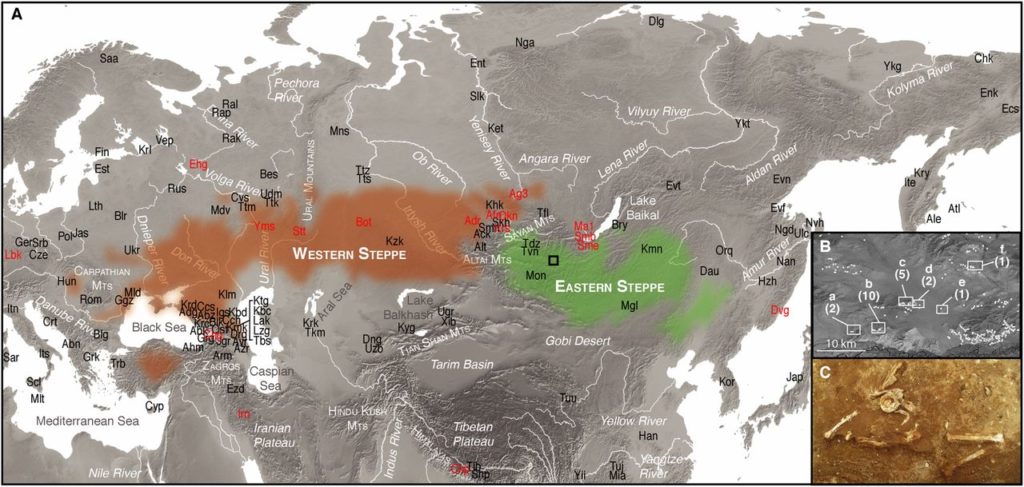Bronze Age population dynamics and the rise of dairy pastoralism on the eastern Eurasian steppe

Choongwon Jeong, Shevan Wilkin, Tsend Amgalantugs, Abigail S. Bouwman, William Timothy Treal Taylor, Richard W. Hagan, Sabri Bromage, Soninkhishig Tsolmon, Christian Trachsel, Jonas Grossmann, Judith Littleton, Cheryl A. Makarewicz, John Krigbaum, Marta Burri, Ashley Scott, Ganmaa Davaasambuu, Joshua Wright, Franziska Irmer, Erdene Myagmar, Nicole Boivin, Martine Robbeets, Frank J. Rühli, Johannes Krause, Bruno Frohlich, Jessica Hendy, and Christina Warinner (2018):
Bronze Age population dynamics and the rise of dairy pastoralism on the eastern Eurasian steppe.
Proceedings of the National Academy of Sciences (PNAS) USA.
https://doi.org/10.1073/pnas.1813608115
Abstract:
Recent paleogenomic studies have shown that migrations of Western steppe herders (WSH) beginning in the Eneolithic (ca. 3300–2700 BCE) profoundly transformed the genes and cultures of Europe and central Asia. Compared with Europe, however, the eastern extent of this WSH expansion is not well defined. Here we present genomic and proteomic data from 22 directly dated Late Bronze Age burials putatively associated with early pastoralism in northern Mongolia (ca. 1380–975 BCE). Genome-wide analysis reveals that they are largely descended from a population represented by Early Bronze Age hunter-gatherers in the Baikal region, with only a limited contribution (∼7%) of WSH ancestry. At the same time, however, mass spectrometry analysis of dental calculus provides direct protein evidence of bovine, sheep, and goat milk consumption in seven of nine individuals. No individuals showed molecular evidence of lactase persistence, and only one individual exhibited evidence of >10% WSH ancestry, despite the presence of WSH populations in the nearby Altai-Sayan region for more than a millennium. Unlike the spread of Neolithic farming in Europe and the expansion of Bronze Age pastoralism on the Western steppe, our results indicate that ruminant dairy pastoralism was adopted on the Eastern steppe by local hunter-gatherers through a process of cultural transmission and minimal genetic exchange with outside groups.
